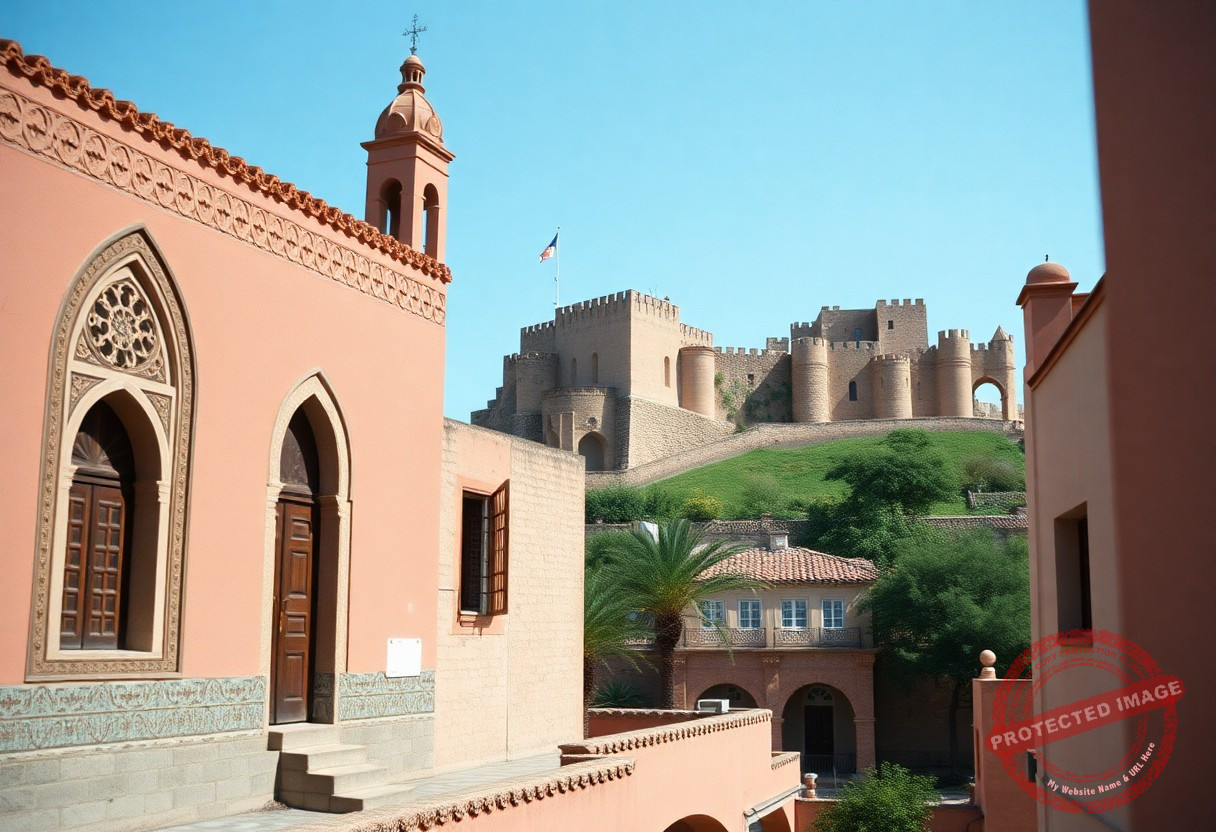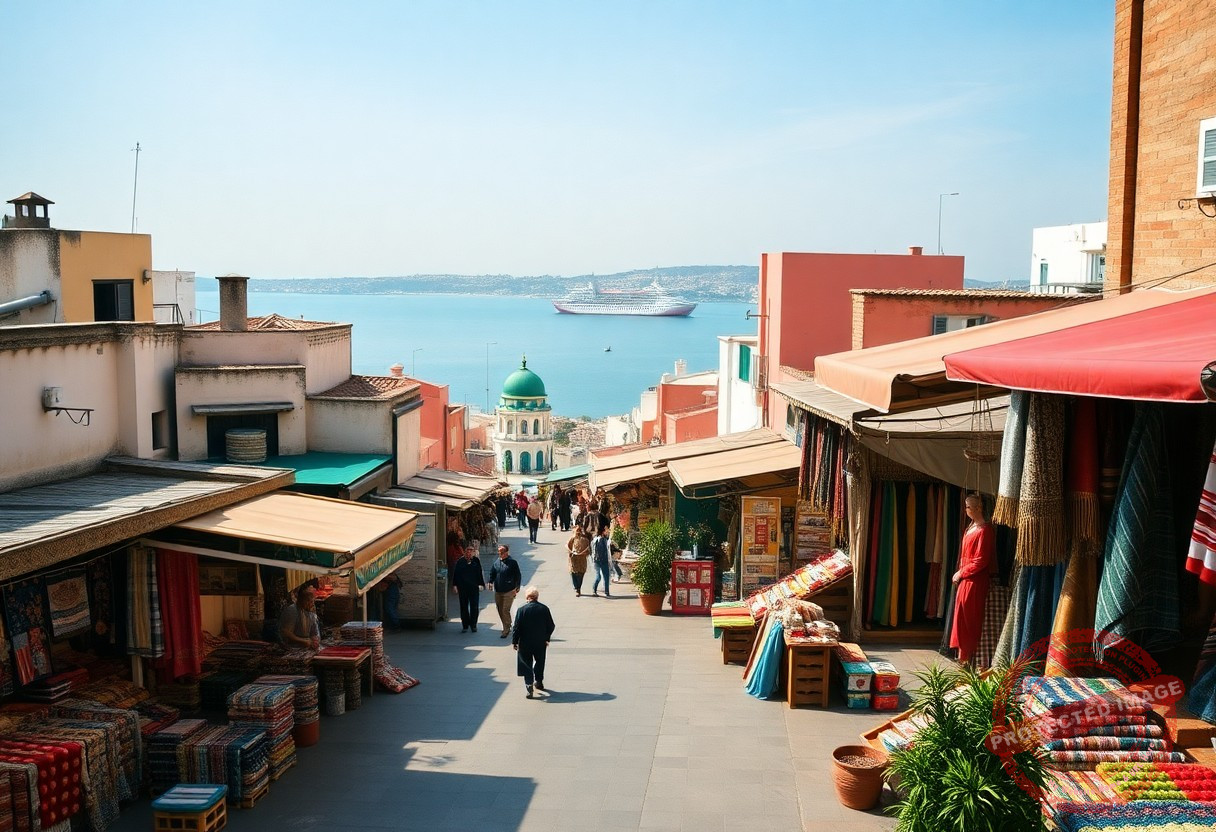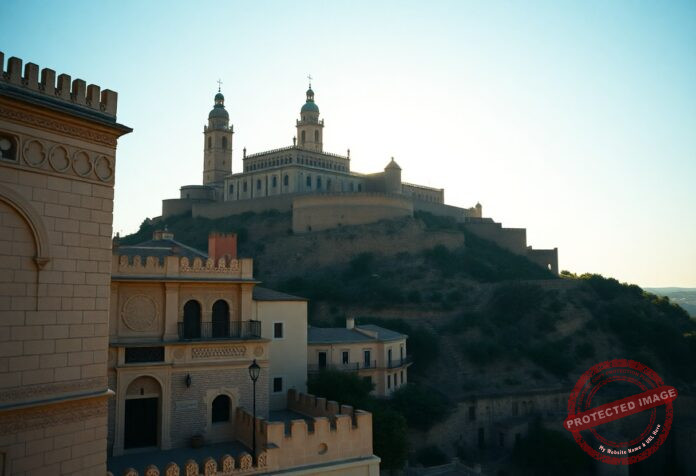This journey takes you through the intricate historical connections between Tangier and Spain, revealing how cultural exchanges have shaped both regions over centuries. You will uncover the significant events and figures that define their relationship, from trade and conflict to cooperation and transformation. By exploring the rich tapestry of their interactions, you will gain insights into how these cities continue to influence each other today, enhancing your understanding of their shared legacy.
Advertisement

Key Takeaways:
- Historical trade routes between Tangier and Spain significantly influenced cultural exchanges.
- The shifting control of Tangier under different empires shaped its strategic importance.
- Tangier served as a melting pot of religions and ethnicities due to its geographic location.
- Local conflicts often reflected broader European political dynamics, impacting Spain-Tangier relations.
- The legacy of colonialism has left lasting social and economic effects on both regions.
- Literary and artistic representations reflect the complex identities formed through these interactions.
- Modern tourism highlights both the historical significance and contemporary ties between Tangier and Spain.

Historical Context
Overview of Tangier’s Role
Tangier has long held a strategic position as a meeting point between Europe and Africa, serving as a vital port city for various cultures and civilizations over centuries. Its location at the entrance of the Mediterranean facilitated trade and cultural exchange, making it a key player in historical interactions between different powers. You can trace its significance back to ancient times, when it was part of the Roman Empire and later became a hub for trading spices, textiles, and precious metals. The city’s ability to adapt to shifting political landscapes resulted in a rich tapestry of influences that defined its identity.
The establishment of the international zone in Tangier in 1923 further cemented its role as a crossroads, as multiple countries, including Spain, France, and the United Kingdom, exerted their influence over the city. This entanglement allowed Tangier to flourish culturally and economically, but it also made it a microcosm of geopolitical intrigue, where your allegiances could shift overnight based on the whims of foreign powers. Such a dynamic environment has left an indelible mark on Tangier’s social and cultural fabric.
Significance of Spain’s Influence
This complexity is further illustrated by the presence of Spanish expatriates and artists in Tangier during the 20th century, who contributed significantly to its bohemian atmosphere. The likes of Paul Bowles and William Burroughs found creative refuge in the city, enhancing its reputation as a haven for intellectual freedom, which can still be felt today. Your exploration of Tangier can reveal hidden narratives of how Spanish presence shaped not just the physical landscape but also the artistic and cultural expressions that define modern Tangier.
Understanding Spain’s influence on Tangier is also imperative in recognizing the historical sentiments that exist today. The remnants of Spanish colonial architecture intermingle with Moroccan designs, showcasing a fusion that narrates the chapters of cooperation and tension. This coexistence offers a compelling insight into how colonial legacies continue to inform contemporary relationships between Spain and Morocco, providing a backdrop for ongoing dialogues about identity, heritage, and future collaborations in the region.
Cultural Interactions
Artistic Exchanges
Artistic exchanges between Tangier and Spain have produced a rich tapestry of influences that reflect the shared history of these regions. You can observe how the vibrant colors and intricate designs typical of Moroccan art made their way into Spanish paintings—particularly during the 19th century. Notable artists like Eugène Delacroix traveled to Tangier, capturing its essence and infusing their works with North African themes. This blending of styles not only enriched Spanish art but also highlighted the allure of Tangier as a muse for European artists.
Additionally, the presence of expatriate artists in Tangier has also contributed to this cultural fusion. You will find that the Beat Generation writers, such as William S. Burroughs and Jack Kerouac, found inspiration in the city’s chaotic beauty, merging literary styles that encapsulate both Western and Eastern motifs. These interactions continue to resonate in contemporary art practices, as local artisans and international artists collaborate to create works that speak to their intertwined identities.
Language and Literature
The linguistic ties between Tangier and Spain are deeply rooted in historical exchanges and have led to a vibrant bilingual culture. You may notice that many Spanish words have their origins in Arabic due to centuries of Moorish influence, contributing to a unique linguistic landscape in both regions. The blending of languages is also evident in the literature produced by authors who have traversed both cultures. Writers like Juan Ramón Jiménez, who spent time in Tangier, have infused their poetic works with elements from Moroccan narratives, creating a dialogue between Spanish and Arabic literature.
Beyond poetry, the prose of both regions has benefited from these interactions, with many authors exploring themes of identity, migration, and conflict that arise from their intertwined histories. The translations of classic Arabic texts into Spanish have opened new avenues for literary appreciation, allowing you to explore the connections between these diverse literary traditions.
In recent years, the literary scene has been invigorated by festivals and publications that promote bilingual literature, encouraging readers to engage with works that celebrate both Spanish and Arabic narratives. This ongoing exchange serves to enrich your understanding and appreciation of how language shapes identity and cultural expression in Tangier and Spain.
Economic Ties
Trade Relations
Trade relations between Tangier and Spain have been significant since ancient times, driven by geographic proximity and mutual economic interests. You can trace the exchanges of goods such as textiles, spices, and agricultural products back to the bustling Mediterranean trade routes. These interactions not only fostered economic growth but also led to the cultural blending that characterizes both regions today. Various agreements facilitated commerce, encouraging Spanish merchants to establish trading posts, which in turn bolstered Tangier’s economy.
Market Dynamics
The market dynamics in Tangier reflect a unique integration of local and Spanish influences, creating a vibrant commercial hub. You’ll find markets bustling with activity, where Moroccan handicrafts sit alongside Spanish imports. This blend of products enriches the shopping experience and reflects centuries of commerce between the two regions. Trade shows and fairs often showcase the best of Tangier’s and Spain’s offerings, attracting tourists interested in diverse goods alongside local culinary delights.
Market dynamics have also been shaped by contemporary shifts in trade practices and economic policies. As you explore these commercial interactions, consider how the establishment of Free Trade Zones in Tangier has attracted foreign investment and generated employment opportunities. This has resulted in a thriving local economy where both traditional and modern businesses coexist, illustrating the evolution of Tangier’s market landscape over time.
Political Connections
Colonial History
The colonial history between Tangier and Spain is deeply woven into the fabric of both nations. During the late 19th and early 20th centuries, Spain sought to expand its influence in Morocco, leading to the establishment of protectorates. In 1912, under the Treaty of Fez, Spain secured its foothold in northern Morocco, including Tangier. This period marked significant architectural and cultural changes in the city, with Spanish styles emerging prominently. You can explore more about this period of influence in Tangier, the international city with Spanish influences.
The repercussions of colonialism still resonate in contemporary Tangier. Spanish educational institutions, customs, and even the language have persisted, creating a unique duality where local and foreign cultures coalesce. As you navigate through the streets of Tangier today, the remnants of Spanish colonial architecture remind you of a bygone era while simultaneously enriching the city’s character.
Diplomatic Relations
Diplomatic relations between Tangier and Spain have evolved significantly over the centuries, undergoing transformations that reflect shifting political landscapes. Following its autonomy in 1956, Morocco established its own foreign policy, yet the bilateral ties remained closely knit due to historical connections and geographical proximity. In recent years, Spain has engaged in various cooperative agreements with Morocco, focusing on trade, security, and migration management, which have direct implications for Tangier as a key entry point in North Africa.
Your exploration of Tangier’s role in diplomatic relations reveals a city that serves as a bridge between two cultures. For instance, initiatives aimed at fostering cross-border collaboration in sectors like tourism and commerce have been pivotal in strengthening ties, exemplifying a pragmatic approach to modern diplomatic relations.
Modern Implications
Tourism and Travel
Your exploration of modern Tangier and its connection to Spain unveils a vibrant tourism sector that thrives on historical allure and cultural richness. In 2019, over 1.5 million visitors flocked to Tangier, drawn by its picturesque landscapes and layers of history. The ferry services connecting Tarifa in Spain to Tangier offer an enticing day trip option, allowing travelers to experience the bustling medina, vibrant souks, and fragrant cuisine of Morocco within a few hours. This accessibility has fostered not just tourism but a deeper appreciation for the intertwined narratives of both regions.
As you wander the streets of Tangier, you’ll notice the influence of Spanish culture from the architectural styles to the local cuisine. Many restaurants serve tapas, while the annual International Film Festival draws filmmakers and tourists alike, celebrating the collaborative artistic spirit between the two nations. Such events not only boost the local economy but serve as a reminder of the historical ties that continue to shape contemporary interactions.
Contemporary Cultural Exchange
A significant element of modern interaction between Tangier and Spain is the thriving cultural exchange that involves art, literature, and music. Artists and writers from both regions congregate to share their work, with initiatives such as the Tangier Arts Festival showcasing Spanish and Moroccan talents side by side. Collaborative projects often emerge from these interactions, highlighting how creative expression transcends borders. You’ll find that these exchanges not only reflect historical connections but also pave the way for new forms of artistic dialogue that resonate with today’s global themes.
Recently, collaborations between Spanish and Moroccan musicians have gained traction, blending traditional sounds with contemporary styles, creating a fusion that appeals to diverse audiences. Events like the “Mediterranean Music Festival” have captured this essence, bringing together diverse artists to celebrate their shared heritage. This cross-pollination of cultural elements fosters an atmosphere of innovation that enriches both communities while inviting visitors to appreciate the ongoing narrative of Tangier and Spain’s relationship. Through this lens, the implications of modern interactions can be seen as extensions of a historical legacy, evolving yet deeply rooted in shared experiences.

Tips for Exploring Tangier
Your trip to Tangier will be enhanced by thoughtful planning and awareness of local customs. This bustling port city offers a plethora of experiences, and knowing where to go can make all the difference. First, familiarize yourself with the Medina, the historic old town. Its narrow, winding streets brim with markets, cafes, and local artisans showcasing their crafts. Another key area is the waterfront, where you can enjoy stunning views of the Mediterranean and encounter street performers, particularly during the evenings.
- Dress modestly and respectfully, especially when visiting religious sites.
- Learn a few basic Arabic phrases; it’s appreciated by the locals.
- Negotiate prices when shopping in local souks.
- Always taste the local cuisine, especially seafood dishes.
- Stay hydrated and take breaks to absorb the vibrant atmosphere.
The local hospitality is genuinely warm, so engaging with residents can provide insights and perhaps friendship. For a comprehensive overview of Tangier, visit The inside guide to Tangier, Morocco’s buzzy port city.
Essential Landmarks
Among Tangier’s many remarkable landmarks, the Kasbah stands out for its historical significance and panoramic views of the city. This fortress, built in the 17th century, exemplifies Morocco’s architectural heritage and serves as a great entry point for exploring Tangier’s history. Nearby, the American Legation Museum highlights the long-standing connection between the United States and Morocco and showcases an impressive collection of artifacts.
The Grand Socco marks the heart of Tangier’s social life. This vibrant plaza is home to numerous cafés and shops, making it the perfect spot for people-watching or relaxing. Just a short walk away lies the famous Café de Paris, a historic venue popular among writers and artists. Be sure to take in the atmosphere as you enjoy a cup of Moroccan mint tea.
Recommended Experiences
When in Tangier, embracing the local culture is crucial for an unforgettable adventure. One standout experience is visiting the Caves of Hercules, which not only offer mesmerizing geological formations but also mythological significance tied to ancient legends. This site presents an excellent opportunity for stunning photographs against the backdrop of the rugged coastline. Additionally, a guided walking tour through the Medina allows for a deep probe Tangier’s historical layers, showcasing bustling markets and hidden alleyways.
Your recommended experiences shouldn’t stop there; consider a day trip to Chefchaouen, the enchanting blue city nestled in the Rif Mountains. The journey takes you through breathtaking landscapes, culminating in a stunning destination. Chefchaouen is known for its charming streets adorned in shades of blue, mountainous views, and a laid-back atmosphere inviting exploration.
Conclusion
Upon reflecting, you can appreciate how the historical interactions between Tangier and Spain have shaped not only the identities of these locations but also their cultural landscapes. The complex relationship between these two regions is marked by trade, conflict, and collaboration, influencing everything from language to cuisine. As you research deeper into this rich tapestry of history, you gain insight into the socio-political dynamics that have defined their connection over centuries.
Your exploration of this narrative reveals the importance of understanding these historical interactions in the context of modern relations. Recognizing the historical foundations allows you to draw parallels and see how past events continue to inform contemporary cultural exchanges. This perspective enriches your appreciation of both Tangier and Spain, highlighting how intertwined histories shape the present and future.
FAQ
Q: What historical events influenced the interactions between Tangier and Spain?
A: The interactions were shaped by several key events, including the establishment of Tangier as a British protectorate in the 17th century, Spanish colonial ambitions, and conflicts like the Spanish Civil War, which impacted regional dynamics and alliances.
Q: How did trade play a role in the relationship between Tangier and Spain?
A: Trade was significant, with Tangier serving as a strategic port for commodities like spices and textiles. The exchange fostered cultural and economic links, influencing both local economies and Spanish colonial interests.
Q: What cultural influences can be seen in Tangier due to its interactions with Spain?
A: Cultural influences include architecture, language, and cuisine. The Spanish presence introduced elements of Gothic and Moorish architecture and contributed to the linguistic landscape, along with a fusion of culinary traditions.
Q: How did colonialism affect the local population in Tangier?
A: Colonialism led to social and economic changes, altering local governance structures and land ownership. The local population experienced shifts in cultural identity, often grappling with the impacts of foreign rule and cultural imposition.
Q: What are some modern-day implications of the historical relationship between Tangier and Spain?
A: Today, the historical relationship continues to influence tourism, trade relations, and cultural exchanges. Increased interest in heritage sites and shared festivals underscores the ongoing connection between the two regions.

